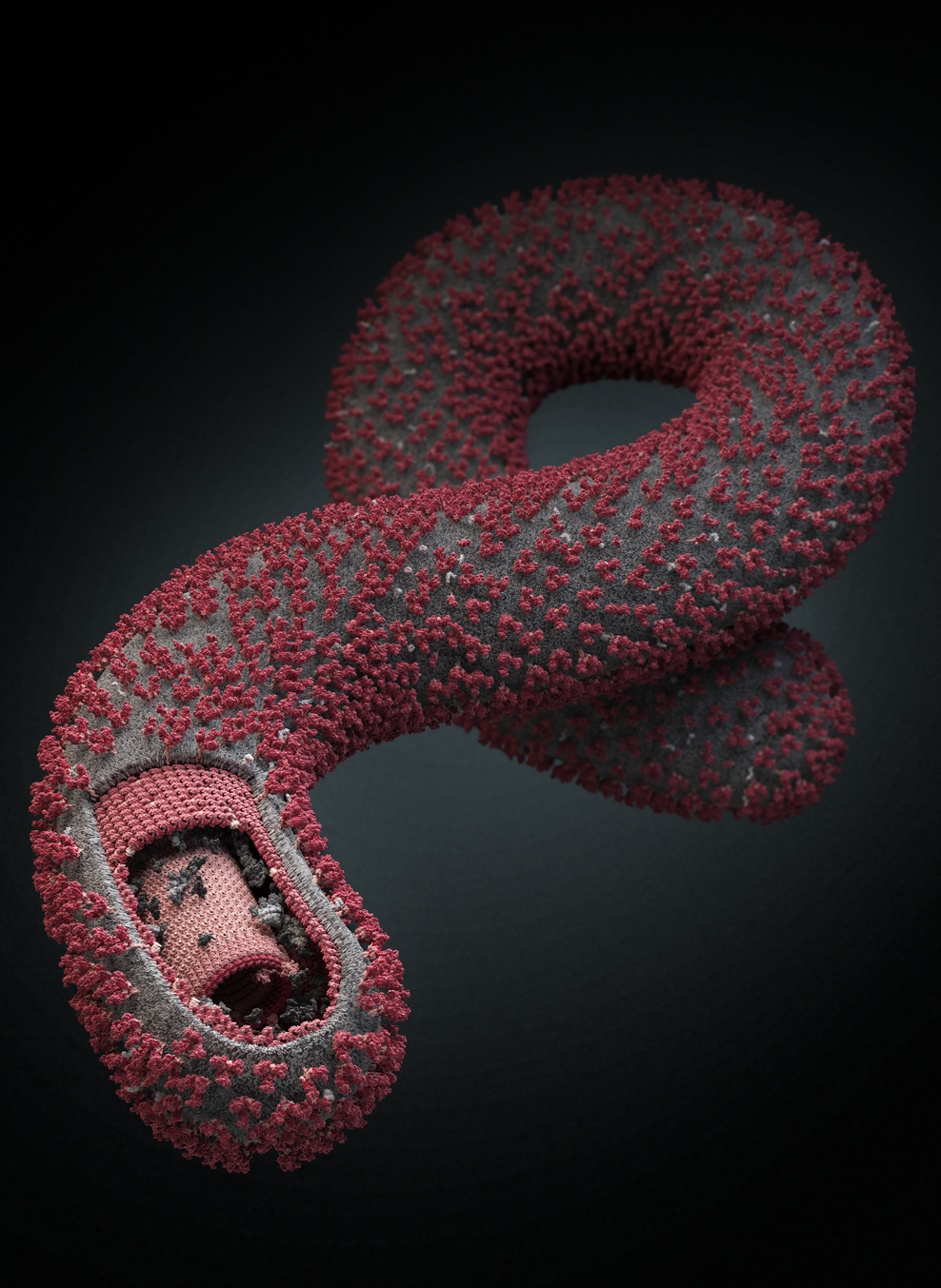Researchers at the University of Virginia School of Medicine have determined the shape and structure of a key element of the deadly Ebola virus, a discovery that will act as a road map for the development of drugs to treat or prevent infection.
Ebola has killed thousands during the ongoing outbreak in West Africa, and the first person diagnosed with the disease in the United States died Wednesday. By better understanding the molecular biology of the virus, researchers are closer to being able to stop it.
“This provides us with clues about how to interfere with the process of infection, as well as replication of the virus, which can, in turn, lead to discovery of new drugs and therapies that would take care of the disease,” said Zygmunt S. Derewenda of the U.Va. Department of Molecular Physiology and Biological Physics.
The researchers have mapped out the structure of a viral protein that has, until now, evaded scientists’ efforts to unlock its secrets and describe its form. One of seven produced by the viral RNA, the protein is believed to be vital to the packaging and replication of the virus.
The protein – the C-terminal domain of the Zaire Ebola virus nucleoprotein – is the most abundant viral protein in infected cells, and also the most abundant in the nucleocapsid, the structure containing the virus’ nucleic acid. U.Va.’s discovery shows the protein has a molecular architecture unlike any other protein known to exist. The protein has a distinctive folded shape that the researchers believe plays a key role in how the virus replicates itself inside cells.
“It is functionally very important, because it is the protein responsible for the packaging of the ribonucleic acid in the cell, so there are many copies of this protein that are necessary to accomplish that function,” Derewenda said. “This also means it may be easier to design drugs that bind to this protein because our target is so abundant in the cell and we can interfere with its function.”
Most of the experimental work was carried out by Paulina Dziubanska, who spent a year at U.Va. under the auspices of U.Va.’s Visiting Research Graduate Traineeship Program for Polish master’s degree students in the biological sciences, for which Derewenda serves as director.
Derewenda’s collaborator, Daniel A. Engel of U.Va.’s Department of Microbiology, Immunology and Cancer Biology, is using the structural finding as a roadmap in his efforts to identify compounds that can inhibit the Ebola infection process – compounds that could eventually be developed into drugs.
“The overall goal is to develop badly needed antivirals for Ebola,” Engel said. “We’re identifying inhibitors here in the lab, and then in the Derewenda lab they’re doing the structural biology that will let us know exactly what’s happening with these inhibitors, down to the atom.”
Engel is screening 40,000 compounds to determine which are effective against Ebola.
“The idea is that if you survey such a large number of compounds, because of the diversity in chemical structure that they have, you should be able to find compounds that inhibit the process you’re looking at – in this case, Ebola replication,” he said.
By understanding the molecular architecture of the virus, Engel and his team can manipulate promising compounds to make them more effective. “After we find out what we have, we have to make them better and better,” he said. “The main impact of [U.Va.’s published findings] is that it’s going to give us significantly more information than we had before that will shed light on how to design inhibitors for this target, the nucleoprotein. So that’s what we’re the most excited about.”
As the U.Va. researchers identify promising candidates, they send them along to their colleagues at the U.S. Army Medical Research Institute for Infectious Diseases. The Army handles all testing involving live virus; as such, there is no risk of infection to U.Va. researchers or the community.
U.Va.’s findings have been published online by the journal Acta Crystallographica Section D. The article’s credited authors are Dziubanska, Urszula Derewenda, Jeffrey F. Ellena, Engel and Zygmunt S. Derewenda. The work has been highlighted on the International Union of Crystallography website as “Protein secrets of Ebola virus.”
Media Contact
Article Information
October 9, 2014
/content/uva-team-identifies-maps-unique-structure-within-deadly-ebola-virus

